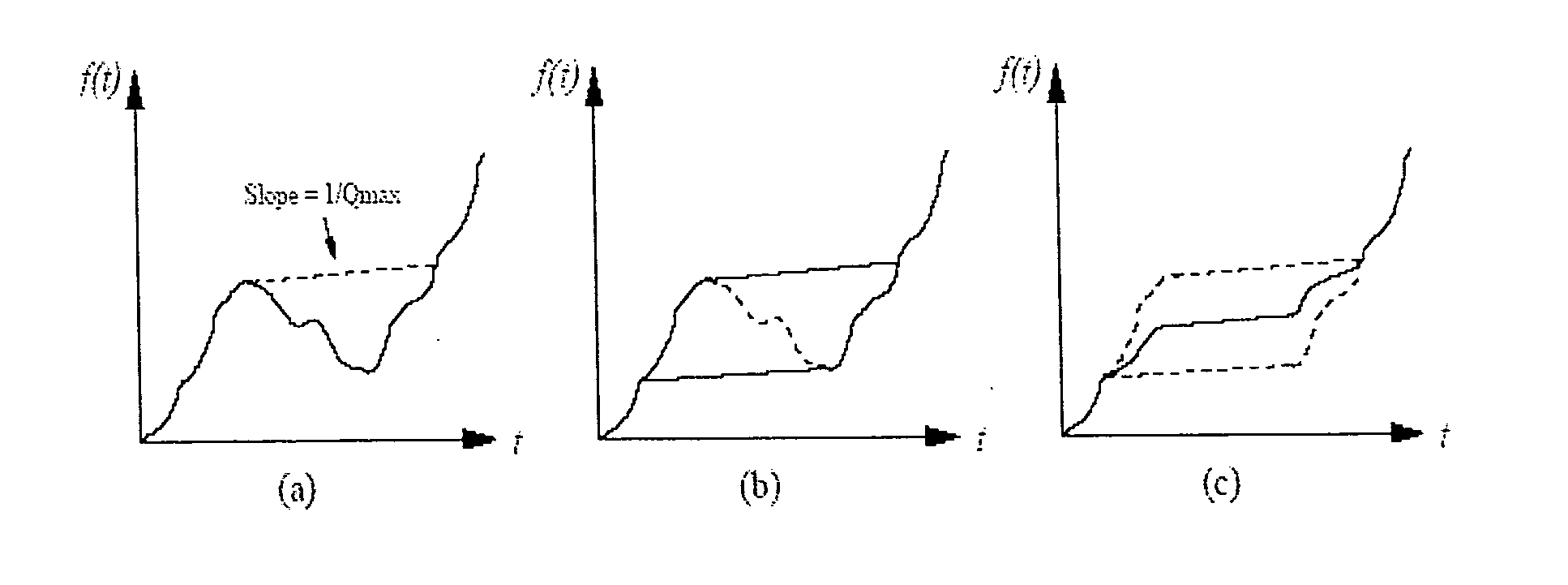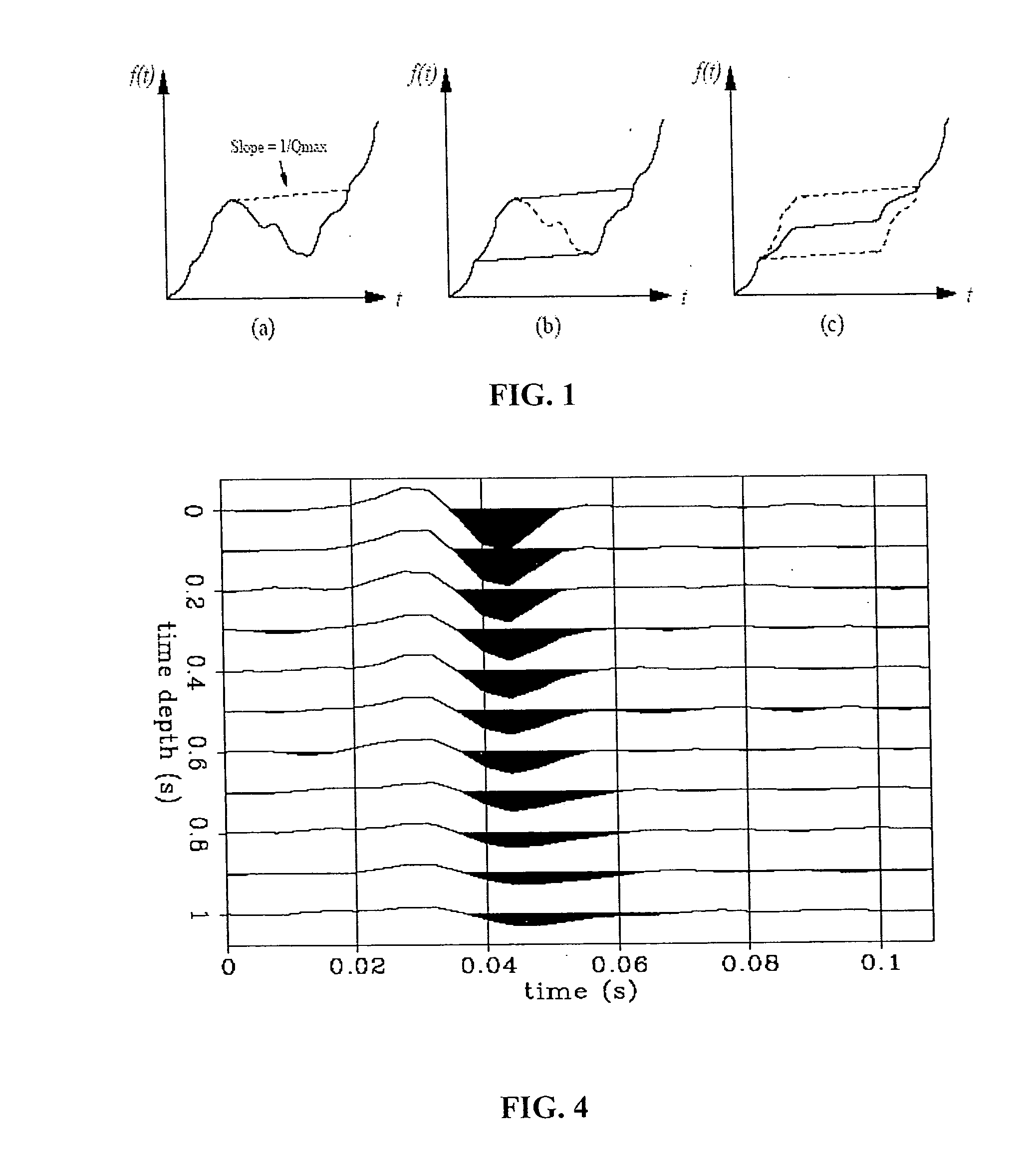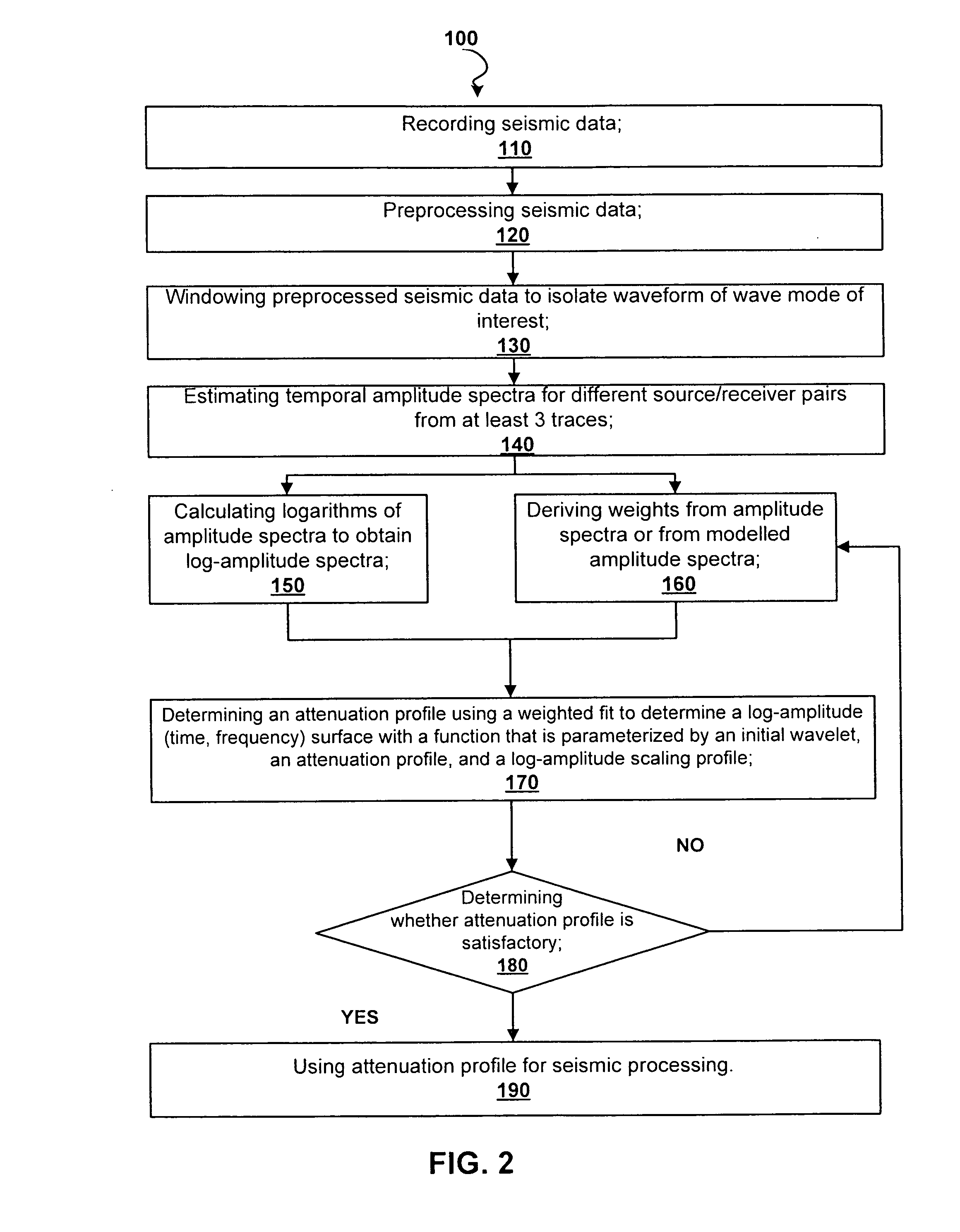Method for estimation of interval seismic quality factor
a seismic quality factor and interval value technology, applied in the field of subterranean seismic analysis, can solve the problems of limited final resolution, low method accuracy, and sensitive to the absolute scaling of waveforms, and achieve the effect of improving reflection seismic data
- Summary
- Abstract
- Description
- Claims
- Application Information
AI Technical Summary
Benefits of technology
Problems solved by technology
Method used
Image
Examples
Embodiment Construction
[0023] I. Introduction
[0024] The present invention includes an algorithm for the estimation of interval values of seismic quality factor, Q, which is made from a set of seismic wavelets as an inversion of their log-amplitude spectra. An initial wavelet and a set of depth-varying scalars are estimated simultaneously with a Q profile of the area through which a wave has propagated. A weighted least-square formulation means results from the algorithm are not biased by incoherent and noisy spectral components. Test data illustrate the trade-off between vertical resolution and sensitivity to noise. The approach outlined here solves simultaneously for a single wavelet and an interval-Q model that satisfies an entire depth-variable amplitude spectrogram. This method can be regarded as a tomographic generalization of the spectral ratio method. However, rather than fitting a line to the log of the spectral ratio, the method fits a surface to the log-amplitude spectra themselves. In general,...
PUM
 Login to View More
Login to View More Abstract
Description
Claims
Application Information
 Login to View More
Login to View More - R&D
- Intellectual Property
- Life Sciences
- Materials
- Tech Scout
- Unparalleled Data Quality
- Higher Quality Content
- 60% Fewer Hallucinations
Browse by: Latest US Patents, China's latest patents, Technical Efficacy Thesaurus, Application Domain, Technology Topic, Popular Technical Reports.
© 2025 PatSnap. All rights reserved.Legal|Privacy policy|Modern Slavery Act Transparency Statement|Sitemap|About US| Contact US: help@patsnap.com



